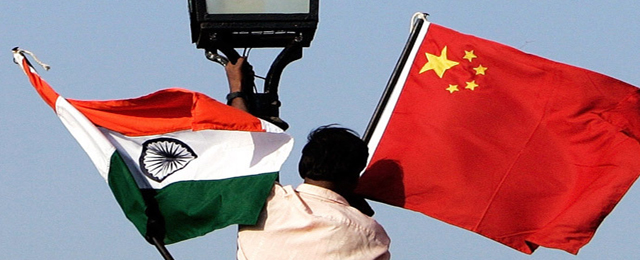India and China are suffering growth challenges. While the immediate reasons for the challenge – overdependence on hot money for India and overreach of the export/investment model for China – are different, both missed two golden opportunities to address their problems. The first was when the global economy was booming before 2008; the second came when global liquidity was rising from 2008 to 2012.
Developed economies, apart from commodity exporters like Australia and Canada, have stabilized. However, their growth rate of 1 percent to 2 percent won’t fuel another global boom. Only when China and India grow fast again can the boom return.
China and India must undertake radical reforms to revive growth. Playing with macro policies like interest rates and fiscal balancing will merely prolong stagnation. Of course, reform is much harder in a slow economy, as vested interest groups fight for a stagnant pie. Nevertheless, there is no alternative. The status quo will likely lead to a crisis because the credit boom will bust in a slow economy.
China needs to decrease investment from half to 30 percent of GDP in five years. This requires the central government to cap investment by local governments and state-owned enterprises at the current level. Because they have a negative cash flow model, they need growing capex to sustain liquidity. Hence, capping investment could lead to some bankruptcies. That is the price that the country must pay to move forward.
India has a tougher challenge. It must mobilize its cheap and plentiful labor to produce investment goods. Its capital formation is too dependent on imports. This is not sustainable for a country of India’s size. To achieve this goal, India must liberalize the labor market, cut down entry barriers to product markets and massively increase infrastructure investment.
Fallen Stars
Global financial markets have turned extremely bearish on China and India. Chinese offshore-listed stocks are trading at extremely low valuation relative to the past or comparable stocks from other countries. India’s currency is collapsing. In the first decade of the 21st century the two were stars for financial investors. From 2001 to 2011, India’s real GDP doubled and nominal GDP tripled, China’s real GDP nearly tripled and nominal GDP more than quadrupled, validating market optimism in terms of growth. How could they, after rising so high, fall so low?
For a decade, India enjoyed the limelight in the BRIC club and received a massive inflow of financial capital. The inflow went into its banking system and was lent out as consumer credit. India enjoyed a consumer-led economic boom. Despite much higher inflation than the global average, India’s currency also stayed strong. That, of course, was a typical emerging market bubble during a global liquidity boom byproduct of a Fed easing cycle. Even though the Fed is merely signaling the gradual unwinding of its QE program and rate hikes are still far away, India is already crashing. This shows how big the bubble is.
India is a poster child for an emerging market bubble. It has run big fiscal and current account deficits for years without being punished by the market. When the liquidity tide is rising, positive stories sell. After 2008, the hot story was decoupling of emerging economies from the troubles in the West. It justified pouring trillions of dollars into them. The hot money, as shown in India’s case, pushed up growth. It was a self-fulfilling bubble. India’s story in the past decade is similar to Southeast Asia’s before 1997.
China’s story is more complicated. It has run current account surpluses. Nevertheless, hot money has played a critical role in increasing money supply and decreasing real interest rates. Because China’s expenditure is less import dependent, the higher money supply has fueled the inflation of non-tradable goods like land. As local governments get their revenue from land sales and more from taxes on property sales, faster monetary growth has caused a sharp redistribution of income toward local governments, primarily through an inflation tax on rest of the economy. Local government spending has been the factor behind the unusually high GDP growth during the decade. Its sustainability depends on how efficiently local governments have spent the money. Not surprisingly, the result is not encouraging. Waste has been widespread.
Over the past decade local governments may have spent over 50 trillion yuan from land sales, property sales taxes and loans. It works like fiscal stimulus funded by debt. As China was already growing rapidly, such a vast amount of stimulus will lead to overheating and bubbles. This dynamic lasted so long because the external liquidity environment allowed the country to increase money supply at such a rapid pace without worrying about currency devaluation. On the contrary, the currency came under pressure to appreciate. China chose to appreciate little by little, creating the perception of a sure winner for currency speculators. It accelerated the inflow of hot money, which prolonged the monetary bubble.
Even though China’s current account surplus is intact, the reversal of the hot money flow means slower monetary growth. It means less inflation tax revenue for local governments and fewer loans are available. Hence, the economy slows. It validates the pessimism and accelerates the outflow of hot money, reinforcing the slowdown dynamic.
China and India are developing countries with vast growth potential. However, amid a liquidity boom, they over-marketed their potential, and nurtured and enjoyed a bubble ride. Their governments felt lucky and hoped that they could grow out of all their problems. Of course, bubbles cover up problems for a time and make them bigger after.
*Read the full version of the article here.






Be the first to comment on "India and China: A Tale of Two Giants"